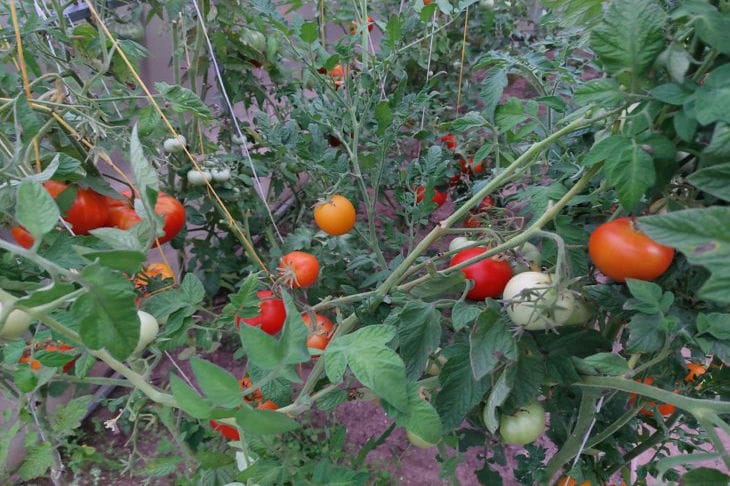Can Tomato Tops Be Throwed into Compost: Notes for Gardeners
At the height of the gardening season, many people are wondering how to use plant waste to good effect.
Composting is an excellent way to convert organic waste into valuable fertilizer.
But what to do with tomato tops? Is it safe to send them to the compost heap or should you look for other disposal options, says Anastasia Kovrizhnykh .
Features of tomato tops
Tomato tops, like the fruits themselves, belong to the nightshade family. This family is known for containing alkaloids – nitrogen-containing organic compounds that can be toxic to humans and animals in large quantities.
Tomato tops contain solanine, a substance that gives them a bitter taste and has fungicidal and insecticidal properties. It is solanine that protects plants from pests and diseases.

Solanine: benefits and harms
In small doses, solanine is not dangerous. Moreover, it has some useful properties: it stimulates cardiac activity, has an anti-inflammatory and antispasmodic effect.
However, when eating large amounts of tomato tops or unripe fruits containing high concentrations of solanine, symptoms of poisoning may occur: nausea, vomiting, diarrhea, headache, weakness.
Tomato tops in compost: pros and cons
Given the composition of tomato tops, gardeners often have doubts about composting them.
There are both pros and cons to adding this material to your compost pile.
Arguments for:
- Enriching compost with nitrogen: tomato tops are green material rich in nitrogen, which is necessary for the development of microorganisms involved in the decomposition of organic matter.
- Suppression of pathogenic microflora: due to the content of solanine, tomato tops are able to suppress the development of some pathogenic microorganisms in compost.
- Increasing the volume of compost: tomato tops are a bulky material that will help increase the amount of future fertilizer.
Arguments against:
- Risk of spreading diseases: If tomatoes have shown signs of blight or other diseases, spores may remain on the tops and infect other plants when compost is used.
- Slow decomposition: Unlike soft green materials, tough tomato stems take a long time to decompose, especially in conditions of low moisture and high temperatures.
- Potential for germination: If tomato seeds are added to the compost, they may germinate, creating unwanted vegetation in the garden beds.
Rules for composting tomato tops
To minimize risks and obtain high-quality compost, you should follow several rules:
- Use only healthy tops: do not compost tops that show signs of disease, especially late blight, which easily spreads and affects other nightshade crops.
- Chop the tops: the finer the stems are chopped, the faster they will decompose.
- Create balance: Alternate layers of green and brown materials in your compost pile to maintain an optimal nitrogen to carbon ratio.
- Create optimal conditions: regularly stir the compost, maintain moderate humidity and warmth for the activity of microorganisms.
- Age the compost: Allow the compost to fully mature before using, this usually takes several months to a year.
Alternative uses for tops
If you are unsure about the advisability of composting tomato tops, there are alternative ways to dispose of them:
- Burying: the tops can be buried in the soil to a depth of 20-30 cm, where they will decompose and enrich the soil with organic matter.
- Mulching: Chopped tops can serve as mulch, protecting the soil from drying out and the growth of weeds.
- Preparation of liquid fertilizer: the tops can be filled with water and left for several days; the resulting solution can be used to feed the plants.
The choice is yours
Therefore, the decision about whether to add tomato tops to compost is made individually, based on the condition of the tops, composting conditions and personal preference.
If you take the necessary precautions, tomato tops can become a valuable component of compost, enriching the soil with nutrients.
Previously we talked about preparing an effective nettle tincture for the garden.
